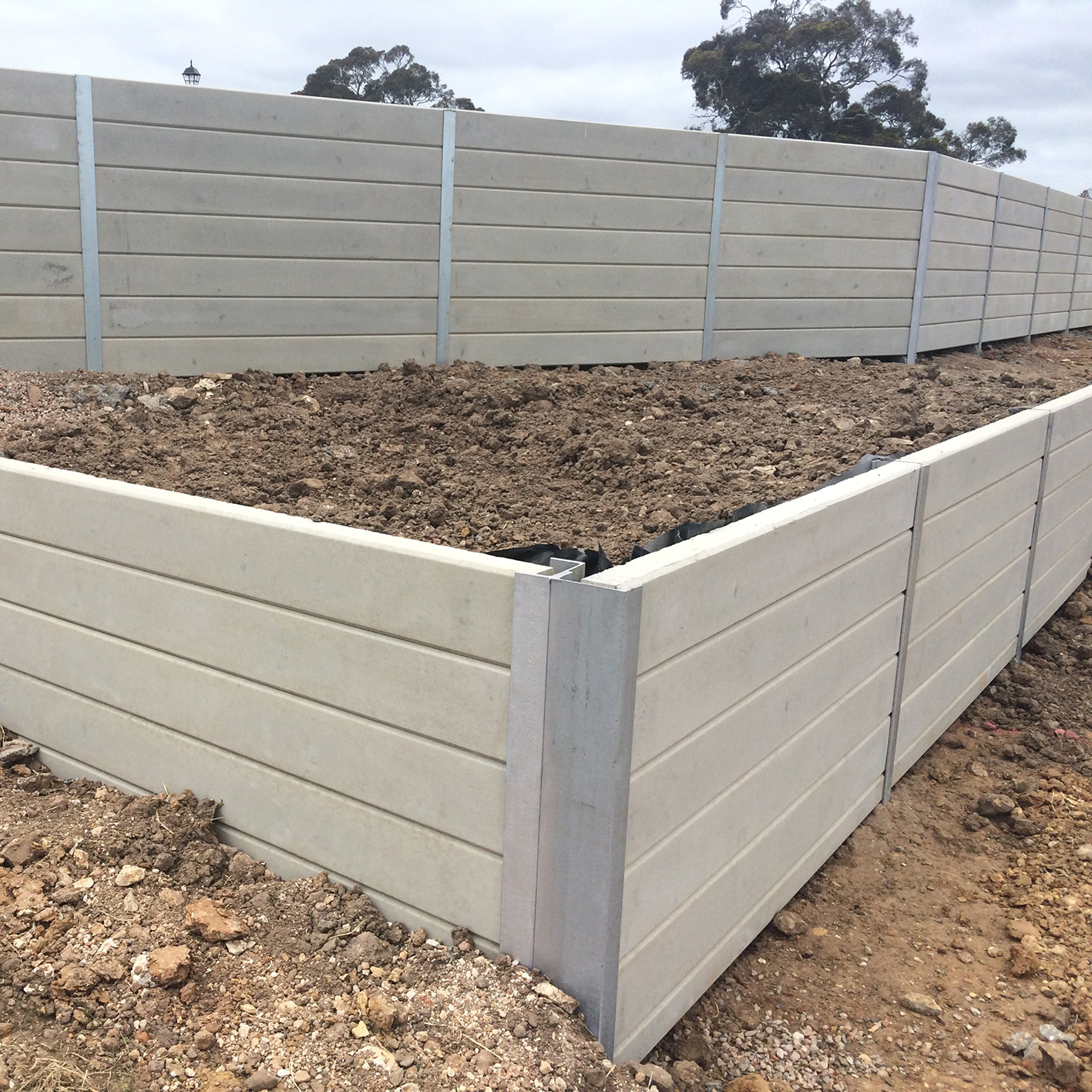Guaranteeing Structural Honesty: The Importance of Correctly Built Maintaining Wall Surfaces in Stopping Incline Failing
In the realm of civil design and building, the significance of correctly built keeping walls in preventing slope failure can not be downplayed. By exploring the detailed interplay in between these elements, a much deeper comprehension of the essential role that maintaining walls play in maintaining architectural honesty and avoiding incline failure arises.
Duty of Retaining Walls in Stability
The necessity of retaining walls in ensuring slope security is paramount in civil design practices. Keeping wall surfaces serve an essential duty in avoiding dirt erosion, taking care of water runoff, and maintaining the architectural stability of slopes. By supporting near-vertical or vertical quality adjustments, keeping wall surfaces aid to redistribute lateral pressure put in by the dirt, thereby decreasing the threat of incline failure.
One key function of maintaining wall surfaces is to neutralize the pressure of gravity acting upon the soil mass behind them. This is achieved through appropriate style and construction, which considers elements such as dirt kind, wall surface elevation, drainage arrangements, and possible additional charge lots. By successfully keeping soil within specified limits, these frameworks help to maintain inclines and prevent landslides.
Additionally, retaining wall surfaces add to the appearances of landscapes while supplying practical benefits. They can create terraced degrees for landscaping, support highways or frameworks on hillsides, and improve the total use of sloped terrain. Essentially, maintaining wall surfaces play a crucial duty in keeping incline security and making certain the safety and security and long life of civil design jobs.
Elements Influencing Wall Performance
Elements that affect the effectiveness of preserving wall surfaces consist of soil properties, wall layout, and exterior lots. Correct wall surface layout takes into consideration factors like wall elevation, wall surface kind (e.g., gravity wall surfaces, cantilever wall surfaces), support products, water drainage systems, and building and construction strategies to make certain the wall surface can hold up against the side stress applied by the maintained soil. By thinking about these elements thoroughly, designers can build retaining wall surfaces that efficiently avoid incline failing and ensure long-lasting structural integrity.
Style Considerations for Maintaining Walls
Incorporating the vital elements of soil buildings and external lots right into the architectural design procedure is crucial for establishing reliable retaining wall surfaces that guarantee slope security. When developing retaining wall surfaces, engineers must thoroughly review the attributes of the surrounding dirt, including its compaction, kind, and water drainage residential properties. Comprehending these soil buildings is vital for identifying the appropriate wall surface support, density, and height required to stand up to the lateral pressure applied by the soil mass.
In addition, outside lots such as additional charge loads from close-by frameworks or web traffic, along with seismic forces, should be considered throughout the style phase. These tons can considerably influence the security and performance of a maintaining wall surface, necessitating making use of correct design techniques and materials to alleviate possible failure dangers.
Furthermore, the option of suitable products, such as concrete, rock, or hardwood, should line up with the site-specific problems and visual needs. Aspect of safety and security considerations, drain stipulations, and construction methods are likewise vital elements that affect the overall style and capability of keeping wall surfaces in stopping incline failing. By carefully thinking about these design considerations, designers can guarantee the architectural stability and lasting stability of maintaining wall surfaces.

Building And Construction Best Practices for Toughness
When creating maintaining walls for optimum resilience and longevity, adherence to industry-standard strategies and precise focus to detail are extremely important. To guarantee the durability of a preserving wall, correct site prep work is essential.
Incorporating reinforcement techniques, such as geogrids or steel bars, can enhance the structural integrity of the keeping wall and avoid prospective failings. By adhering to these building and construction ideal techniques, maintaining wall surfaces can withstand the test of time and efficiently stop slope failure.
Significance of Appropriate Maintenance
Routine upkeep is necessary for preserving the architectural stability and functionality of keeping wall surfaces over time. To ensure that maintaining walls continue to execute their intended feature efficiently, normal evaluations need to be carried out to recognize any type of indicators of wear and tear.

Conclusion
Finally, retaining walls play an imp source essential duty in making sure architectural honesty and protecting against incline failing. By taking into consideration factors affecting wall effectiveness, adhering to design considerations, adhering to building and construction ideal techniques, and applying correct upkeep, the resilience of keeping walls can be maximized. Retaining Walls Sunshine Coast. It is vital to acknowledge the significance of properly built maintaining wall surfaces click reference in keeping stability and avoiding possible hazards connected with slope failure
Aspects that affect the performance of keeping walls include dirt residential properties, wall layout, and exterior loads. Correct wall surface style thinks about aspects like wall elevation, wall kind (e.g., gravity wall surfaces, cantilever wall surfaces), reinforcement materials, drainage systems, and construction methods to make sure the wall can withstand the side stress put in by the kept soil. By taking into consideration these variables thoroughly, designers can create maintaining wall surfaces that efficiently stop slope failure and make certain long-lasting architectural stability.
Maintenance jobs may consist of clearing water drainage systems to prevent water accumulation behind the wall surface, repairing any type of noticeable cracks or damages, and guaranteeing that the wall surface is free from discover this greenery that can exert stress on the framework. By taking into consideration elements affecting wall surface effectiveness, adhering to make considerations, complying with building and construction ideal practices, and carrying out correct maintenance, the longevity of retaining walls can be made the most of.